The Coteaux Champenois of Aÿ-Champagne
- Shreya Kohli

- Dec 24, 2020
- 14 min read
Updated: Apr 20, 2024
This month we are delighted to hear from the fascinating Isabelle Rousseaux, tour guide based in the Grand Cru village of Aÿ and founder of Aÿ Champagne Experience. As the favourite wine of Versailles, the still wines of Champagne were incredibly popular centuries ago, but lost out in favour of their burgundian neighbours in the 1770s. Nowadays we are seeing a resurgance of the still wines of champagne led by the growers and family owned houses. Isabelle walks us through the best coteaux champenois of her hometown of Aÿ Grand Cru.
Original version in French below.
Translation in English by Shreya Kohli

Since 1974, Coteaux Champenois has been an AOC produced in part of the Champagne vineyard, spread over 9 sub-regions (Ambonnay, Aÿ, Bouzy, Cumières, Mailly, Oeuilly, les Riceys, Sillery and Verzy). This appellation is reserved for still white, rosé and red wines, and is the least known of the Champagne wines, with much lower productions which make the wines very rare and at a generally higher price.
On this terroir, we find the humidity and freshness of the climate in Champagne mainly on the chalky limestone soils. Having the perfect exposure, the vineyards here produce exceptional wines. The wine here draws its finesse from the subtle marriage of humidity and chalky soil, and the resulting slow maturation of the grapes.
Coteaux-Champenois is aged in oak barrels and comes from the blending of the same grape varieties as Champagne (Pinot Noir, Meunier and Chardonnay). These wines are supple on the palate and have notes of raspberry for the reds, at the same time they are dry, lively and fresh for the whites, and they once bore the name of "natural wines of Champagne" including the famous Bouzy rouge with bouquets of cherry and morello cherry.
The best-known Coteaux-Champenois AOC is made in the Aÿ region by Maison Bollinger on a plot which is less than one hectare. This steeply sloping plot, called "La Côte aux Enfants" i.e. the children's coast", takes its name from the fact that, in the past, only children could work here due to their small size. This vineyard is maintained by the house in an artisanal way and uses the Burgundian method of vinification.
This wine was also greatly appreciated by Henri IV, a fine wine lover.
Today the production of still wines is still present but it is quite confidential and rare.
For the lovers of Coteaux Champenois and still wines, here are a few of the rare wines of Aÿ.
Champagne Henri Giraud
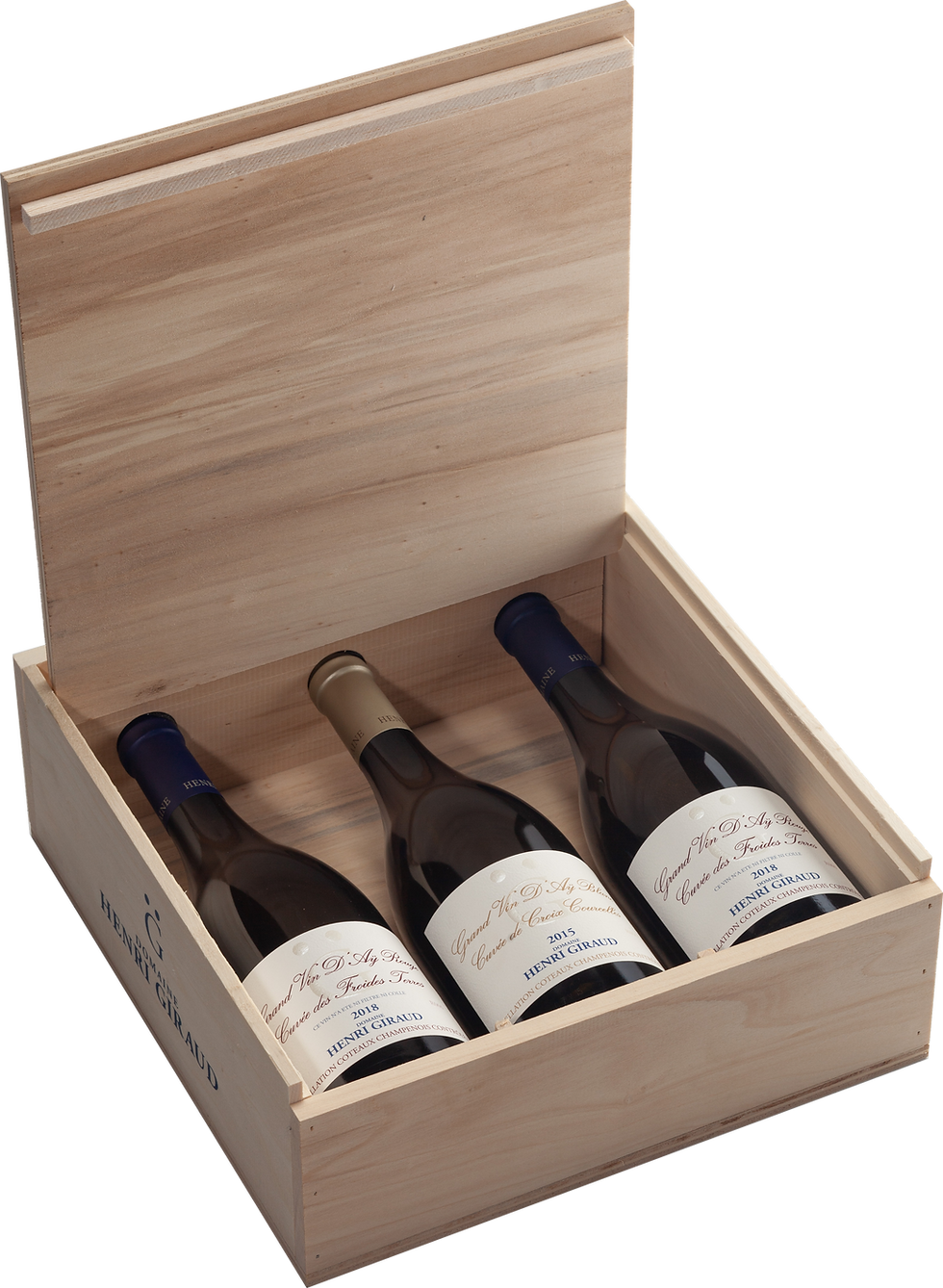
Residing in the heart of Aÿ since 1625, this family house makes champagne from the grapes from two exceptional slopes. The domain has been committed to bring back “The great wines of Champagne”.
Each of their cuvées explores a new aestheticism and delivers a strong message that goes well beyond the simple repetition of the ancestral gestures of the winemakers/artisans fading behind mother nature. This is completely the opposite of industrial simplification for the benefit of mass production.
The Coteaux Champenois rouge 100% Pinot Noir from Aÿ Grand Cru is the first red wine which is guaranteed to be free from pesticide residue upon molecular analysis. The house also produces a Coteaux Blanc, which is 100% Chardonnay, it brilliantly represents a modern style of still wines from Champagne. In all the history of Champagne, it is the only Aÿ Grand Cru Coteaux Champenois Blanc. The winemaker, Sébastien Le Golvet knows how to take advantage of the contribution of wood without it losing the freshness and distinction that characterises the land. Fluid and warm, it has a very surprising delicacy of texture. Going back to the origin of the wine, this rare drop will leave a limestone like flavour to fill your mouth.
(2 Coteaux R000: Triple zero - 0 Herbicide, 0 Insecticide, 0 Fungicide)
Champagne Goutorbe

The Champagne house Henri GOUTORBE, is a family business, located in Aÿ. The creation of Champagne wines were started by the activity of the wine nurseryman, a family tradition since the beginning of the century.
We noted in our degustation of their wines from the Aÿ hillsides; The wine presents itself with a clear and fairly fluid hue, deep cherry red in colour with dazzling ruby red reflections in the glass. The presentation announces a rich and nuanced wine. The first nose is seductive and velvety. It evokes an intoxicating scent of heady red roses, peppery aromas, Burla cherry, liquorice and toast. Aeration of the wine reveals notes of fresh blackcurrant, raspberry, morello cherry, strawberry and wet vine leaf.
The approach on the palate is supple and fresh with a fleshy and satiny fruity substance, which is supported by the acidity of blackcurrant. The mid-palate is orchestrated by a chalky clay minerality which gives fullness, a certain vinosity, elegance and length to the palate. The perfect ripeness of the grapes associated with careful extraction and respectful ageing allows you to appreciate a velvety touch on the palate, and to feel the intimacy of the pulp. The slender finish is thus fresh, deep and smooth, pulpy to perfection, finely chalky and tasty.
Etienne Goutorbe suggests tasting the wine at a temperature between 15°C and 17°C with the pairing of any of the following culinary dishes:
Monkfish in red wine, bacon, juniper berry and glazed carrots
One-sided cooked tuna with seasonal vegetables
Roasted turbot with red wine sauce, celery puree with broken truffles
Fine charcuterie
Waterfowl stone
Rabbit stew with mushrooms
Rooster in red wine from Aÿ
Zucchini and Eggplant Spaghetti with Bolognese sauce
Grilled Lamb Ribs
Rack of lambs with herbs
Quail with lingonberries
Champagne Christian Gosset
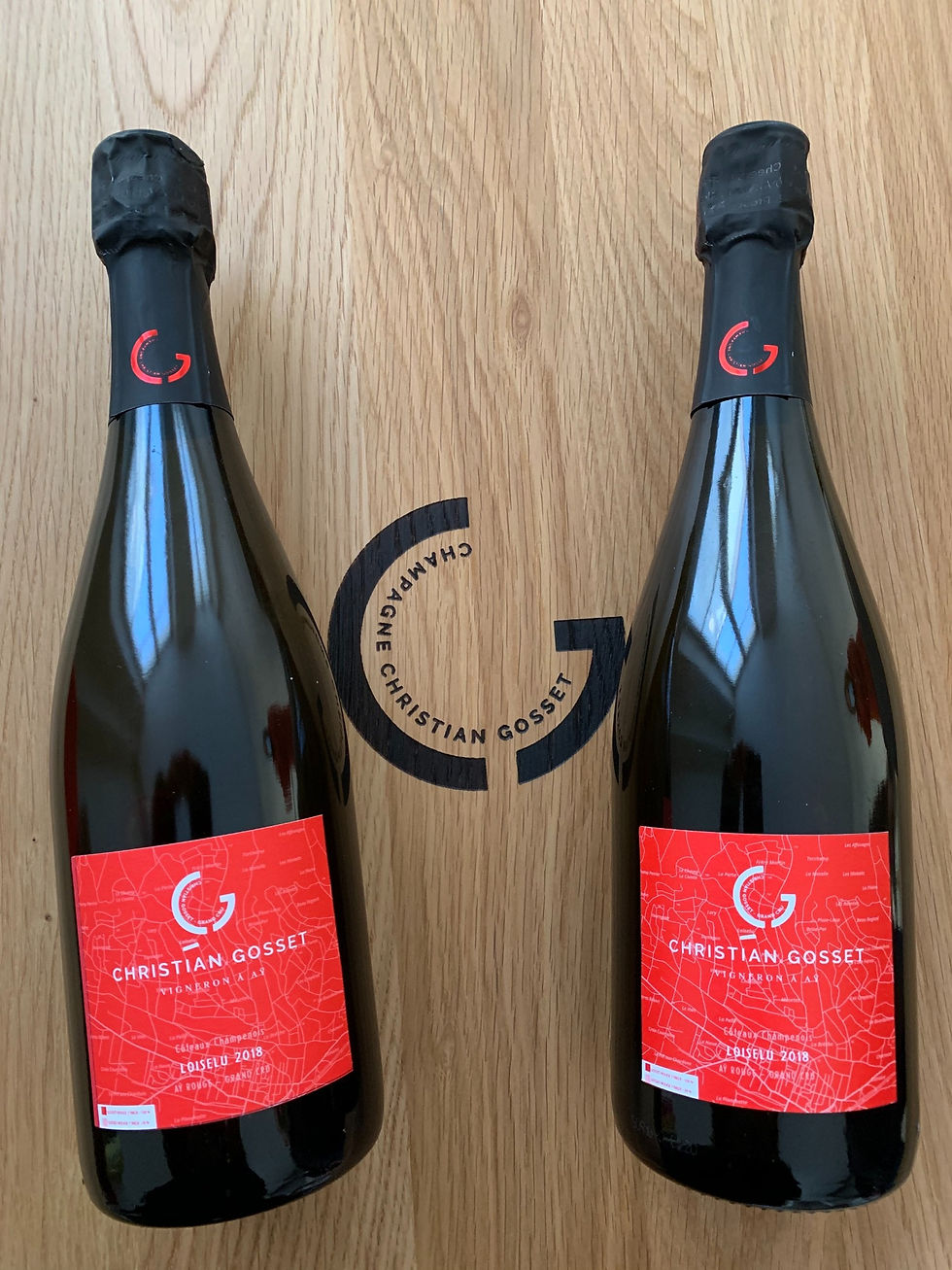
After 30 years of good and loyal service in the family vineyards and in the field, selling to wine merchants and restaurateurs, Christian GOSSET decided to change his life at fifty and make his own wine.
Born from its 5 ha vineyard, certified HVE / VDC, Christian has blended four expressive and high intensity single vineyard cuvées as well as two Coteaux Champenois.
For his still wines, Christian Gosset operated a very delicate total de-stemming, nine day vatting followed by two years ageing in barrels of 3 wines. Alcoholic and malolactic fermentations took place naturally. They were bottled in July 2020 without fining or filtration. There are only 300 bottles produced from each of the two plots of Aÿ.
LOISELU 2018: a vine planted in 1963 on the upper slopes in the heart of the Aÿ terroir with 15% east-facing slopes with a clay soil with limestone on chalk and a grape harvest grade of 11.6. The result is a delicate red grape, fruity with a very strong colour.
PISSE-LOUP 2018: a vine planted in 1995 on the upper slopes of Aÿ with a western orientation and a steep slope of up to 40%. Poor soil on chalk and a harvest grade of 12.1 which has resulted in a robust red with a very strong color, powerful, with a very round and chalky finish.
His advice? “Nice generous glasses, a few foodie friends in a beautiful location. It can only lead to a beautiful story being written together".
Champagne Gatinois

The production of Aÿ red Coteaux-Champenois is a part of the soul of the house, but always in very small quantities and with a careful selection of vintages.
During the “red” years, when they are very ripe, they isolate their oldest plots on the mid-slopes (Bonnote, Cheuzelle, Chaufour) which always give them the greatest concentration of aromas.
Sorting is done entirely on the plot with even more attention than for the other plots, with a selection is made on each cluster.
The key to their red is also a long maceration in order to get the intense notes of cherry and blackcurrant which are typical to the petits pinots of Aÿ.
The young generation of Aÿ: Paul Gosset and Romain Henin ...
Paul Gosset:
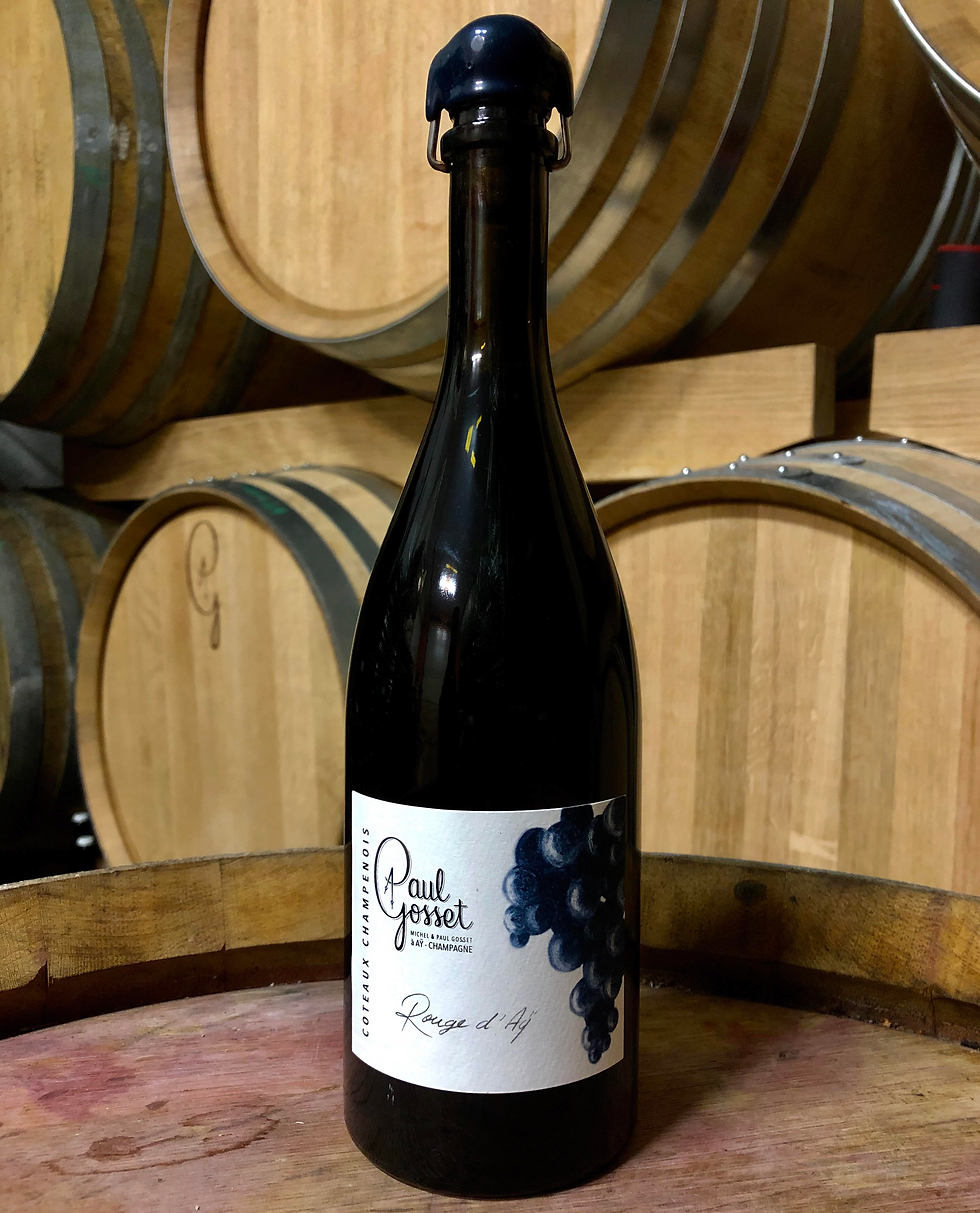
Coming from an ancient wine family located in Aÿ since the 16th century, Paul's goal is to get as close as possible to the symbiosis that may exist between the land, the vine, the wine and the environment. To do this, he makes extensive use of the principles of agroforestry.
Viticulture:
Paul Gosset works with respect for life with integrated viticulture. The plant cover allows it to let the soil lie flourish and therefore creating more structured and lively wines. For the slopes (near the Coteaux), Paul takes the plot(s) with soils which have high water potential to allow beautiful phenolic maturation. Sometimes it is possible that the alcohol concentration is high due to water stress in the vineyard, although, this is not the case at home.
The plots intended for the production of still wines are chosen and then worked according to the size at the harvest. It manages to have a beautiful balance between matter, acidity and alcohol, thanks to low yields and deep mineralization in the soils. For his last "Rouge d'Aÿ", he used the Loiselu plot planted in 1972.
Vinification:
Paul Gosset tries to vinify with the least possible intervention. The addition of sulphite may or may not be done depending on the behaviour of the musts. He adds it once when the juices are the most vulnerable before the fermentation begins. For the Rouge d'Aÿ, they scrape and tread very lightly. Then begins the maceration process, a light punching down, then the fermentation begins naturally without adding yeast and it continues to dip until three quarters of fermentation. The maceration is then finished.
He then devats the marc to keep only the free-run juice (the most fruity, delicate and least tannic part). The juice is extracted, and it completes the first fermentation in the tank. The wine is intoned and the ageing can begin. Malolactic fermentation occurs naturally without adding bacteria during this phase. At home, ageing lasts 18 to 24 months depending on the behaviour of the wine. Only the last step remains; the bottling is done in a very delicate way, by gravity.
Romain Henin:

The vineyards here are certified organic and in conversion to the Demeter label (bio-dynamic). Romain Henin works in agroforestry, which means planting of trees outside and inside the plots in order to increase biodiversity and provide a plant-soil balance. Its soils are alive and covered with different species all year round.
In the cellar, he continues the work done in the vineyard in order to make living wines. No inputs or sulphites but grape juice, which ferments naturally in its cellar in order to be as close as possible to their terroir and their history. His work in the vines and in the cellar is punctuated by the lunar calendar.
Romain's Coteaux Champenois is called MPQR (Maceration Pinot Qvevri Rouge). It comes from two plots in Aÿ: Pruche and Chaufour. Two Pinot Noir vines, planted in 1962 and 1965 respectively. The harvest is done with friends in small fruit boxes, half of which are macerated in whole bunches and the other half in berries for a fortnight. Then the pressing stage happens, which by gravity fills the Georgian amphorae, qvevri to finish fermenting and rising.
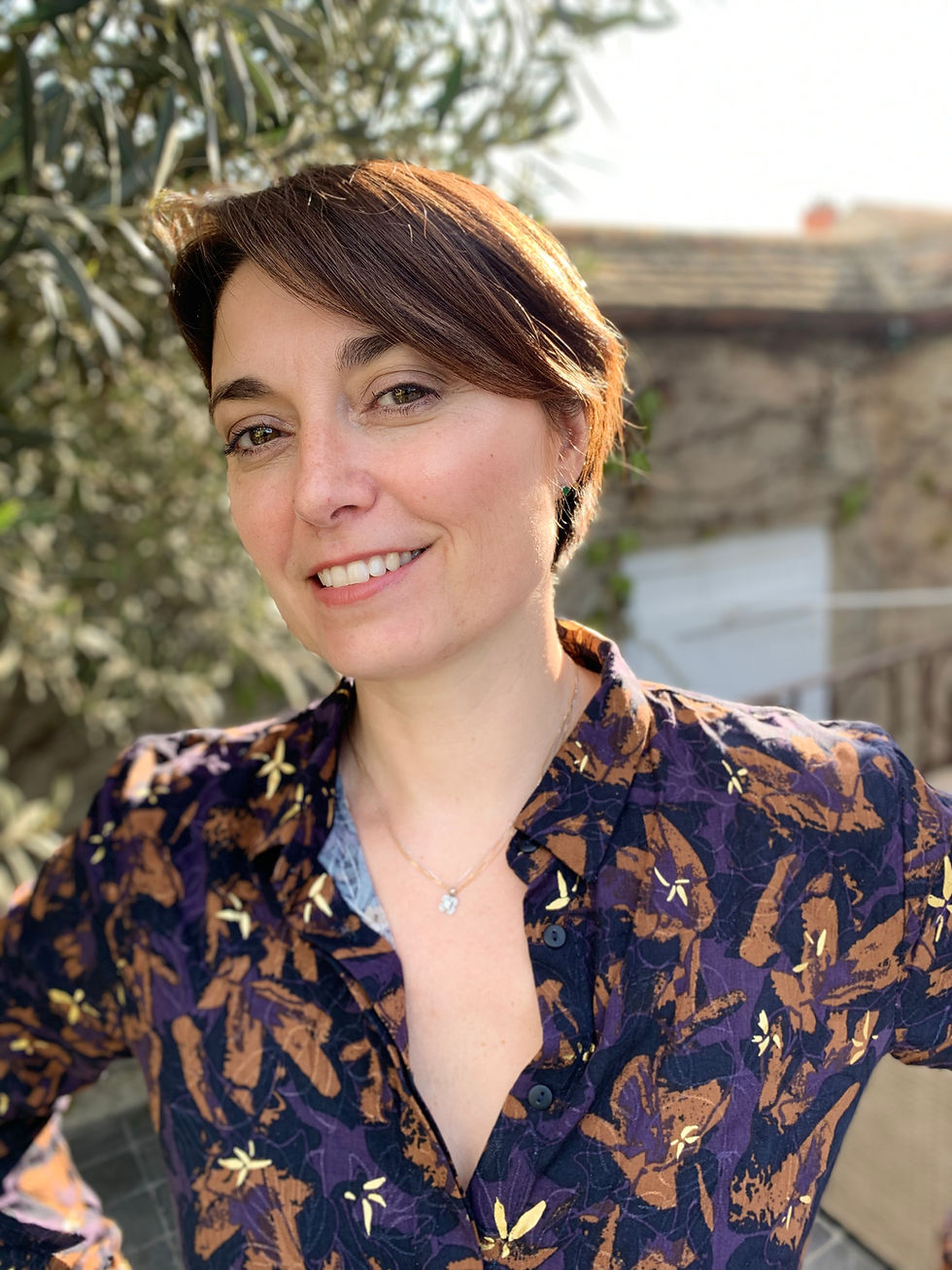
About Isabelle Rousseaux
Born and bred in Ay, Isabelle is the founder of Ay Champagne Experience.
After studying history & management of French & European cultural heritage at La Sorbonne, she worked as a training manager at a large private school where she was responsible for setting up training programmes to highlight the value of heritage and cultural tourism. Ten years later she returned to her hometown to share her passion for the architectural treasures of Ay and the surrounding villages, as well as its hillsides, growers and houses all classified as UNESCO World Heritage.
Find out more here; aychampagneexperience.com
Les Coteaux-Champenois d’Aÿ- Champagne
Mots par Isabelle Rousseaux, guide oenotouristique privé et fondatrice de Aÿ Champagne Experience.
Le Coteaux-Champenois est depuis 1974 une AOC produite sur une partie du vignoble de Champagne, réparti sur 9 sous-régions (Ambonnay, Aÿ, Bouzy, Cumières, Mailly, Oeuilly, les Riceys, Sillery et Verzy).
Cette appellation réservée aux vins tranquilles blancs, rosés et rouges, est la moins connue de la Champagne, avec des productions beaucoup plus faibles qui rendent les vins de plus en plus rares (et au prix généralement élevé).
On retrouve sur ce terroir les conditions d’humidité et de fraîcheur du climat champenois sur des sols calcaires principalement crayeux. Avec sa parfaite exposition, ce vignoble produit des vins exceptionnels. Le vin tire ici sa finesse du subtil mariage de l'humidité et du sol crayeux, et de la lente maturation du raisin qui en découle.
Le Coteaux-Champenois est élevé en fûts de chêne. Il est issu de l'assemblage des mêmes cépages que le Champagne (pinot noir, pinot meunier, chardonnay).
Ces vins sont souples en bouches et framboisés pour les rouges, à la fois secs, vifs et frais pour les blancs, portaient d'antan le nom de "vins natures de Champagne" dont le célèbre Bouzy rouge aux bouquets de cerise et de griotte.
L’AOC Coteaux-Champenois le plus connu est fabriqué dans la région d'Aÿ par la Maison Bollinger, sur une parcelle de moins d’un hectare. Cette parcelle en forte déclivité, appelée la "Côte aux Enfants", tient son nom au fait que, autrefois, seuls des enfants pouvaient y travailler grâce à leur petite taille. La maison entretient ce vignoble de façon artisanale et utilise une méthode de vinification à la bourguignonne.
Il était très apprécié d’Henri IV, fin amateur de grand cru. Aujourd’hui la production des vins tranquilles est toujours présente mais plus confidentielle.
Pour les amateurs de Coteaux champenois et de vins tranquilles, il existe à Aÿ quelques adresses incontournables, plus confidentielles dont voici une sélection :
Champagne Henri Giraud

Je vous invite à déguster les deux coteaux exceptionnels de cette Maison familiale au coeur d’Aÿ depuis 1625.
Domaine engagé dès la première heure pour que le champagne redevienne « Le grand vin de Champagne », chacune de leurs cuvées explore un nouvel esthétisme et délivre un message fort allant bien au-delà de la simple répétition de gestes ancestraux du vigneron/artisan s’effaçant derrière dame nature ; et totalement à l’opposé de la simplification industrielle dépouillant ces gestes de leur substantifique moelle au profit d’une production de masse.
Son Coteaux champenois rouge 100% pinot noir d’Aÿ Grand cru est le Premier vin rouge garanti sans résidu de pesticide sur analyse moléculaire.
La Maison commercialise aussi un Coteaux blanc, 100% Chardonnay, brillant représentant, dans un style moderne des vins tranquilles de la Champagne. Il se trouve être l’unique Aÿ Grand Cru Coteaux Champenois Blanc dans l’histoire de la Champagne. Il sait profiter de l’apport du bois sans perdre la fraicheur et la distinction qui caractérisent notre terroir. Fluide et chaleureux, sa délicatesse de texture est étonnante. Signant l’origine du vin, cette perle rare laissera le calcaire emplir votre bouche.
(2 Coteaux R000 : Triple zéro – 0 Herbicide, 0 Insecticide, 0 Fongicide)
Champagne Goutorbe

La maison de Champagne Henri GOUTORBE, est une entreprise familiale, située à Aÿ. La création de vins de Champagne a suivi l'activité de pépiniériste viticole, tradition familiale depuis le début du siècle.
Quelques notes de dégustation de leur coteaux champenois d’Aÿ :
Le vin se présente agrémenté d’une robe à l’aspect limpide et assez fluide, de couleur rouge cerise profonde avec des reflets rouge rubis éclatants dans le verre. La présentation annonce un vin riche et nuancé. Le premier nez est séducteur et velouté. Il évoque un parfum enivrant de
rose rouge capiteuse, des odeurs poivrées, de cerise Burla, de réglisse, de pain grillé. Une aération du vin révèle des notes de cassis frais, de framboise, de cerise griotte, de fraise, de feuille de vigne mouillée. L’approche dans le palais est souple et fraîche avec une matière fruitée charnue et satinée, soutenue par une acidité de cassis. Le milieu de bouche est orchestré par une minéralité argilo-crayeuse qui confère de l’ampleur, une certaine vinosité, de l’élégance et de l’allonge au palais. La parfaite maturité des raisins associée à une extraction soignée et à un élevage respectueux permettent d’apprécier un toucher de palais velouté, et de ressentir l’intimité de la pulpe. La finale élancée se veut ainsi fraîche, profonde et enrobée, pulpeuse à souhait, finement crayeuse et savoureuse.
Etienne Goutorbe suggére une température de dégustation entre 15 et 17°C en compagnie des préparations culinaires suivantes :
Lotte au vin rouge, lardons, baie de genièvre et carottes glacées Thon cuit à l’unilatéral, légumes de saison
Turbot rôti sauce au vin rouge, purée de céleri à la brisure de truffe Charcuterie fine
Pierrade de gibiers d’eau
Civet de lapin aux petits champignons
Coq au vin rouge d’Ay
Spaghettis de courgettes et d’aubergine à la bolognaise
Côtes d’agneau grillées
Carré d’agneau aux herbes
Cailles aux airelles...
Champagne Christian Gosset

Après 30 années de bons et loyaux services dans les vignes familiales et sur le terrain, auprès des cavistes et des restaurateurs, Christian GOSSET a décidé de changer de vie : à cinquante ans, faire son vin. Tout simplement.
Nées de son vignoble de 5 ha, certifié HVE/VDC, sont maintenant prêtes deux cuvées d’assemblage, quatre cuvées parcellaires expressives et de grande intensité ainsi que deux coteaux champenois.
Pour ses Coteaux Champenois, Christian Gosset a opéré un éraflage total très délicat, une cuvaison de 9 jours puis un élevage de deux ans dans des fûts de trois vins. Les fermentations alcoolique et malolactique sont naturelles. Mis en bouteille en juillet 2020 sans collage, ni filtration, 300 bouteilles issues de 2 parcelles d'Ay sont nées:
LOISELU 2018 : une vigne plantée en 1963 sur les hauts de coteaux en plein cœur du terroir d’Aÿ avec une pente de 15% orientée est, un sol argile à meulières sur craie et un degré à la vendange de 11.6. Le résultat : un Rouge en dentelle, fruité avec une couleur très soutenue.
PISSE-LOUP 2018 : une vigne plantée en 1995 sur les hauts de coteaux d’Aÿ avec une orientation ouest et une forte pente jusque 40%, un sol pauvre sur craie et un degré à la vendange de 12.1 qui a fait naître un rouge charpenté à la couleur très soutenue, puissant, avec une finale très gourmande et crayeuse.
Son conseil ? « De jolis verres généreux, quelques amis gourmands. En voyage. La belle histoire s’écrit ensemble, maintenant ».
Champagne Gatinois

La production de coteaux-champenois Aÿ rouge fait partie de l’âme de la maison, mais toujours en très petites quantités et avec une sélection attentive des années.
Durant les années « à rouge », à forte maturité, ils isolent leurs plus anciennes parcelles à mi-coteaux (Bonnote, Cheuzelle, Chaufour) qui leur donnent toujours la plus grande concentration.
Le tri est fait intégralement à la parcelle avec encore plus d’attention que pour les autres parcelles, la sélection se fait sur chaque grappe.
La clé de leur rouge est aussi une macération longue afin d’aller chercher les notes intenses de griotte et de cassis typique des petits pinots d’Aÿ.
La jeune génération d’Ay : Paul Gosset et Romain Henin…
Paul Gosset

Issu d’une ancienne famille de vin située sur Aÿ depuis le 16ème siècle, Paul a pour objectif de se rapprocher le plus possible des symbioses pouvant exister entre la terre, la vigne, le vin et l'environnement. Pour ce faire, il utilise beaucoup les principes de l'agroforesterie.
Viticulture:
Paul Gosset travaille dans le respect du vivant avec une viticulture intégrée. Les couverts végétaux lui permettent d'avoir une vie du sol et donc des vins plus structurés et plus vivants.
Pour le coteaux (bientôt les Coteaux), Paul prend la ou les parcelles avec des sols à fort potentiel hydrique pour permettre d'avoir des belles maturitées phénoliques. Parfois il est possible que la concentration en alcool se fasse par un stress hydrique de la vigne, ce n'est pas le cas à la maison.
Les parcelles destinées à l'élaboration de vins tranquilles sont choisies puis travaillées en fonction de la taille à la vendange. Il parvient à avoir de beaux équilibres entre la matière, l'acidité et l'alcool grâce à des faibles rendements et des minéralisations profondes dans nos sols.
Pour son dernier "Rouge d'Aÿ" il a utilisé la parcelle Loiselu plantée en 1972. (Détailles de la parcelle en pièce jointe sur la contre étiquette)
Vinification :
Paul Gosset essaye de faire des vinifications avec le moins d'interventions possibles. L'ajout de sulfite ce fait ou pas en fonction des comportements des moûts. Il en met 1 fois lorsque les jus sont les plus vulnérables avant que les fermentations ne commencent. Pour le "Rouge d'Aÿ" nous éraflons et foulons très légèrement. Commence alors le processus de macération, il fait des légers pigeages, la fermentation commence naturellement sans ajout de levures, il continue de piger jusqu'au trois quart de la fermentation. La macération est finie. Il décuve alors le marc pour ne garder que le jus de goutte (partie la plus fruité, délicate et la moins tannique). Le jus extrait, il termine la première fermentation en cuve. Le vin est entonné, l'élevage peut débuter. La fermentation Malo-lactique se fait naturellement sans ajout de bactéries pendant cette phase. A la maison, l'élevage dure 18 à 24 mois suivant le comportement du vin. Reste plus que la dernière étape ; la mise en bouteilles ce fait de manière très délicate, par gravité.
Romain Henin

Son vignoble est certifié en bio et en conversion vers le label Demeter (biodynamie). Il travaille en agroforesterie, c’est à dire plantation d’arbres à l’extérieur et à l’intérieur de mes parcelles afin de retrouver de la biodiversité et l’équilibre plante, sols. Ses sols sont vivants et couverts toutes l’année par différentes espèces.
En cave, il continue le travail effectué à la vigne dans le but de faire des vin vivants. Aucun intrants ni sulfites que du jus de raisin qui fermentent naturellement dans sa cave dans le but d’être au plus proche de leur terroir et de leur histoire. Son travail aux vignes et à la cave est rythmé par le calendrier lunaire.
Son coteau champenois se nomme MPQR, pour Macération Pinot Qvevri Rouge. Il est issu de deux parcelles de Aÿ: Pruche et Chaufour. Deux vignes de Pinot Noirs plantées respectivement en 1962 et 1965. La vendange se fait entre amis en petites caissettes à fruits, il fait macérer la moitié en grappes entières et l’autre moitié en baies pendant une quinzaine de jours. Puis l’étape du pressurage qui viens remplir par gravité mes amphores géorgiennes, qvevri pour finir de fermenter et de s’élever.

About Isabelle Rousseaux
Nee a Aÿ, Isabelle a suivi à Paris des études d'histoire et gestion du patrimoine culturel français et européen à la Sorbonne puis travaillé en tant que responsable formation dans une grande école parisienne où elle encadrais des formations professionnelles de mise en valeur du patrimoine et de gestion du tourisme culturel. De retour depuis 10 ans dans la maison familiale d'Aÿ, elle vous invite aujourd'hui à découvrir les richesses historiques et architecturales de son village ainsi que ses coteaux classés au Patrimoine mondial de l'UNESCO, ses vignerons, ses maisons de champagnes prestigieuses.




.jpg)


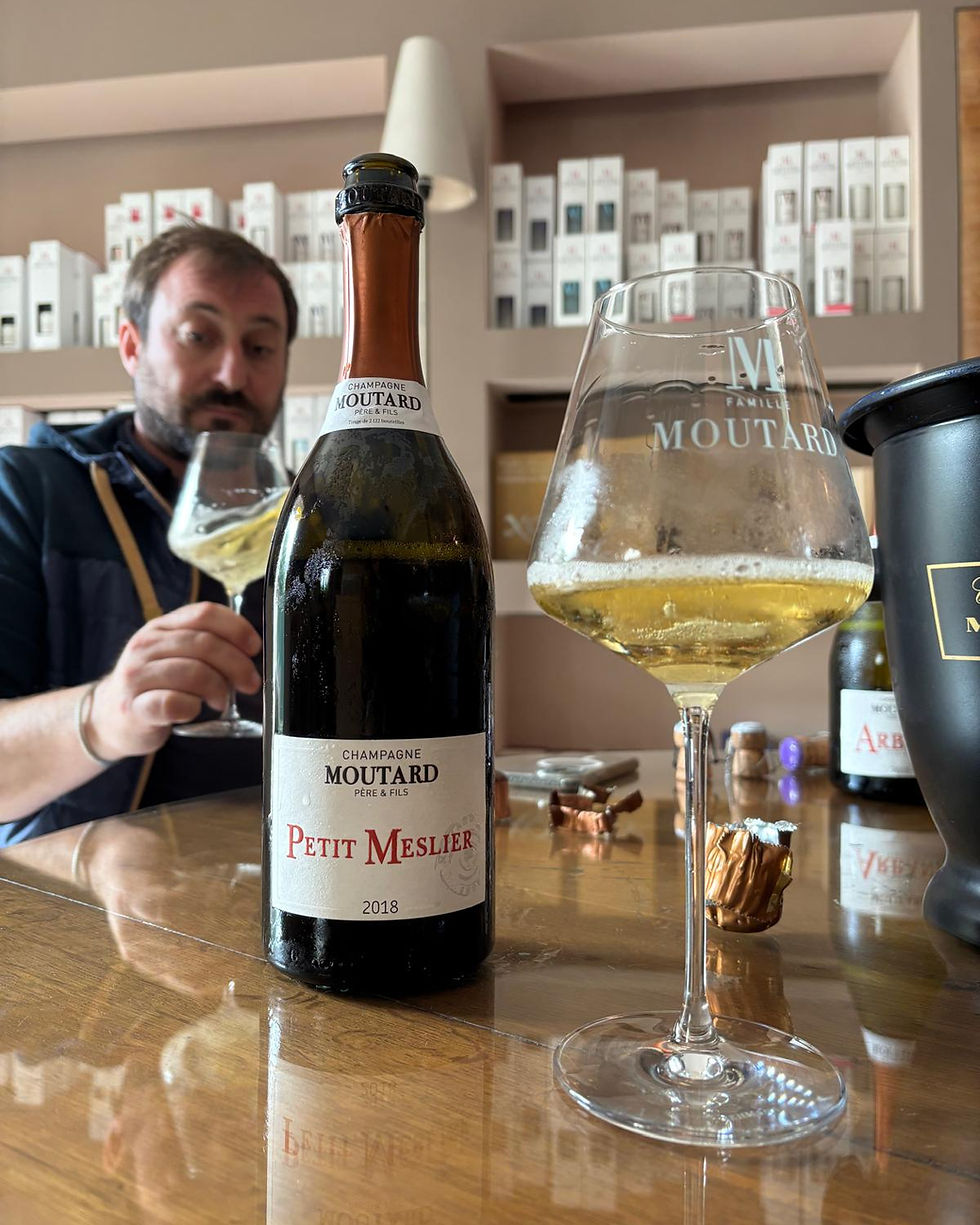












Comments